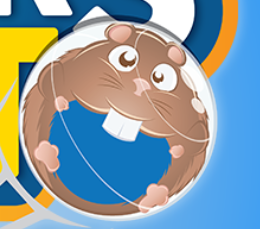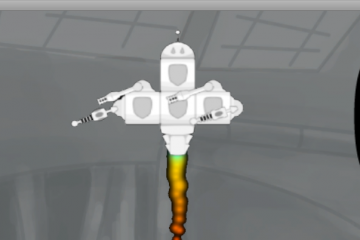Michael Vick Presents: Hamsters Fight
Design
This was one of the first “Rapid Prototype” games that I developed at FIEA. I was the sole programmer on a team with two artists and two producers. Our inspiration for this game came from a recent lesson in game design: some of the most fun people have in games is when they almost die. We took near-death experience heavy games like Monkey Ball and F-Zero and added a dash of another fun staple: multiplayer. We wanted each player to feel like they were only seconds away from death at any point, but that no death was ever certain. We also wanted players to risk their own safety in order to start annihilating their opponents. This gave us Michael Vick Presents: Hamsters Fight.

We tried several ways to evoke the feeling of pressure: fireballs fired faster as time passed, hazard count increased as you progressed through the levels, and new hazards were introduced each level, until the game proceeds at a frenzied pace. We slowly introduced more dangerous mechanics, starting with the lowly bumper, continuing with rotating saws and finally finishing with the ultimate move: The Hamster-Wheel Powered Dynamo (HWPD). The HWPD was a high risk high reward hazard. To reach it the player would have to brave the tight intersection of all fireballs, saws, and chaos. The players lucky enough to make it were rewarded with the most advanced weapon ever offered to hamster-kind. We also introduced soft fail states to give players the feeling of being very close to death. If a hamster was ever hit by a fireball (the most common hazard) they still had several seconds to take a nice, cool drink of water to put themselves out before they died. And if they were feeling like taking a risk, they could try to side-swipe a different hamster to light them on fire before dousing themselves with water from their hamster feeder.
Programming
I oversaw all programming, and we decided to keep things simple. I leveraged the built-in physics tools from the Unity engine for most of the gameplay. The hamsters are represented by spheres, and their rolling is force being applied in the direction of the player’s choice. Most hazards are built-in collision objects, which made hit detection easier to plan around and modify.
One interesting feature that stuck out was hamster-on-hamster collision. The game was built to be a party game and to encourage a risk vs. reward style of gameplay. The risk was aiming for your opponent, ramping up speed, and attempting to transfer your momentum. The reward was watching them fly into danger at super speed, but it was just as fun to be dodged and watch yourself fly instead! But we noticed that players were not interacting with each other. They thought it was much safer to stick to their own corner and not fight, so we had to sweeten the pot for hamster chaos! We upped the collisions to transfer 100% of the momentum to the other hamsters, but it still was not worth it. It wasn’t until I wrote a script to transfer up to double your current momentum (!!) based on speed at time of collision that players felt it worth the risk to speed into danger.
I’ve created several games since MVP:HF, but it will always have a special place in my heart as one of the more entertaining and exciting games I’ve helped create.
